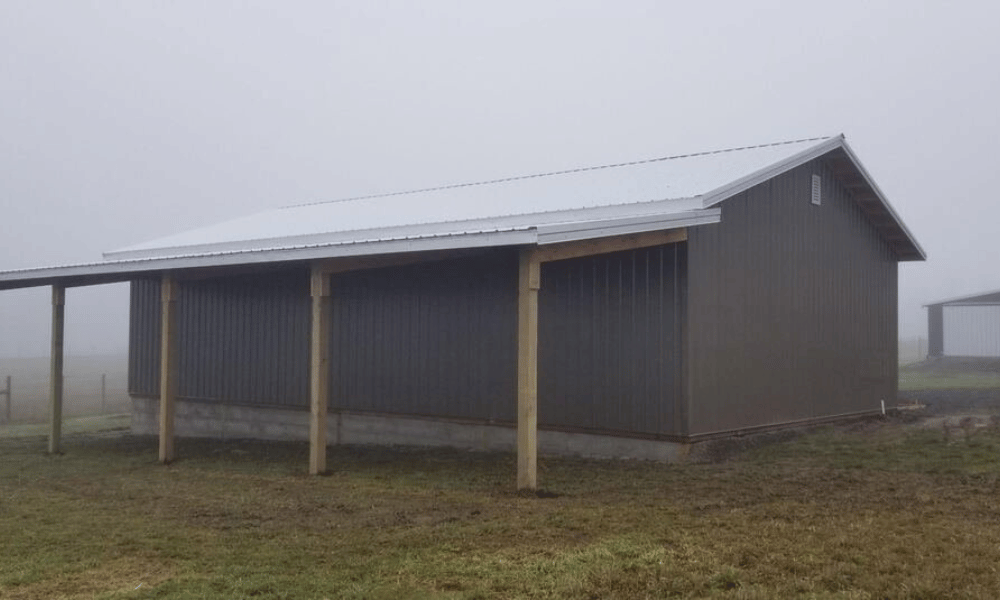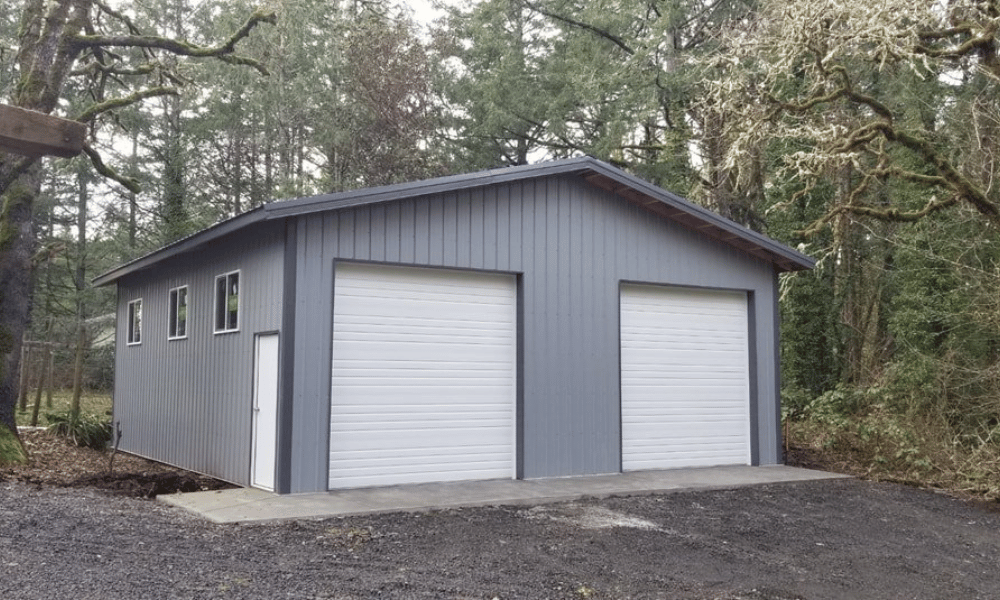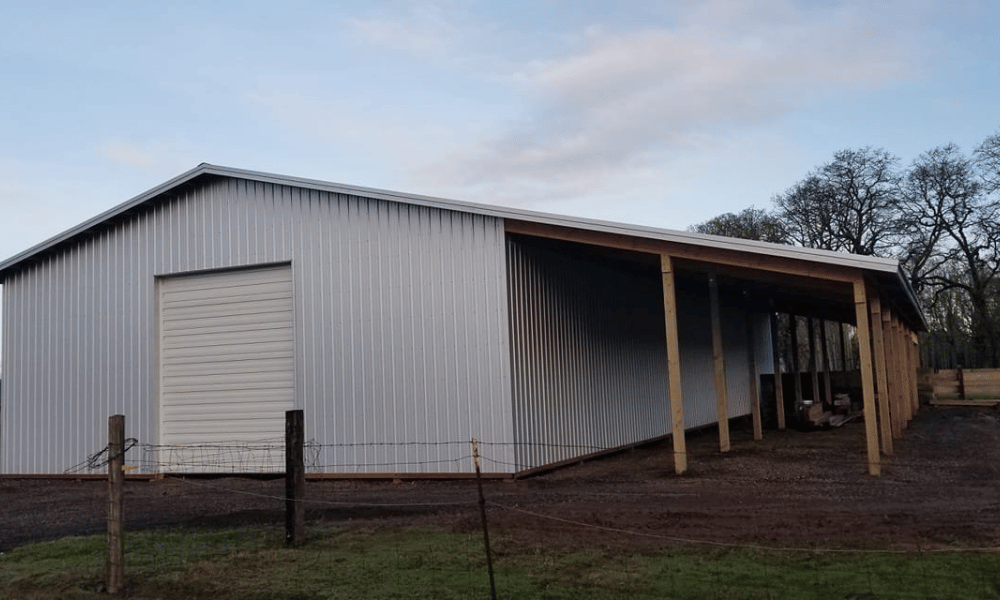Introduction
When it comes to maintaining a pole barn garage, budgeting can feel like navigating a maze. Whether you’re using it for storage, as a workshop, or even to house vehicles, understanding the costs associated with upkeep is crucial. The flexibility and cost-effectiveness of pole barns make them popular choices for many homeowners. However, the maintenance expenses can add up if not carefully planned. This article will guide you through essential budgeting tips and practical advice to ensure your pole barn garage remains functional and appealing while keeping your finances in check.
Pole Barn Garages: An Overview
What Is a Pole Barn Garage?
A pole barn garage is a structure characterized by its post-frame construction method, which involves the use of large poles or posts as the primary support system. This design allows for greater flexibility in terms of layout and size compared to traditional garages.
Benefits of Choosing a Pole Barn Garage
Cost-Effectiveness: Generally less expensive than conventional garages due to lower material costs. Customizability: Easily adaptable to various needs—be it storage, workshops, or vehicle housing. Quick Construction: Can often be built faster than traditional structures.Common Uses for Pole Barn Garages
- Vehicle storage Workshops for hobbies or crafts Equipment storage for farming or landscaping Seasonal storage for boats or RVs
Understanding Your Maintenance Needs
Routine Maintenance Tasks
Regular maintenance is key to prolonging the life of your pole barn garage. Here are some common tasks:
Roof inspections Cleaning gutters and downspouts Painting or sealing exterior surfaces Checking for pest infestationsHow Often Should You Perform Maintenance?
Most routine maintenance tasks should be performed at least annually, but some may require more frequent attention depending on environmental conditions.
Pole Barn Garage Maintenance Budgeting Tips You Need to Know
Creating an Initial Budget
Before diving into specifics, start with an overall budget that outlines expected costs over the year.
Key Categories Include:
- Materials (paint, sealant) Labor (if hiring professionals) Tools and equipment (ladders, pressure washers)
Consider Seasonal Impacts on Your Budget
Your geographic location will dictate how seasons affect your maintenance costs:
In areas with heavy snowfall, consider additional roofing inspections. In wet climates, budget for mold remediation solutions.Evaluating Long-Term Costs vs Short-Term Savings
Investing in Quality Materials
While it might be tempting to opt for cheaper materials initially, investing in high-quality products can save money in the long run by reducing maintenance frequency.
Labor Costs: DIY vs Hiring Professionals
Deciding whether to tackle projects yourself or hire professionals can impact your budget significantly:
- DIY projects save labor costs but require time and skill. Hiring professionals ensures quality work but raises expenditures.
Prioritizing Repairs and Upgrades
Identifying Essential Repairs First
Some repairs cannot wait—like fixing a leaking roof—while others can be postponed:
Leaky roofs should top your list. Cosmetic upgrades can wait until finances allow.Budgeting for Upgrades Over Time
Plan out upgrades over several years rather than all at once to spread costs evenly.
Utilizing Tools Wisely in Your Maintenance Routine
Essential Tools Every Owner Needs
Investing in basic tools can limit labor costs and enable you to perform most maintenance tasks yourself:
| Tool | Purpose | |------------------|-----------------------------------| | Pressure Washer | Cleaning exterior surfaces | | Ladder | Accessing roofs | | Paint Sprayer | Efficiently painting large areas |
The Importance of Inspections in Your Budget Plan
Annual Inspections: What To Look For?
Setting aside funds specifically for professional inspections can prevent costly repairs down the road by identifying issues early on.
Key Areas To Inspect:
Structural integrity of poles Condition of roofing materials Signs of pest damageCleaning and Organizing Your Pole Barn Garage
Frequency of Cleaning Tasks
Regular cleaning not only improves aesthetics but also prevents long-term damage caused by dirt accumulation:
- Aim for biannual deep cleans. Quick monthly tidies should suffice between deep cleans.
Organizational Systems That Save Money
Implement organizational systems that help keep track of tools and supplies efficiently:
Suggested Solutions:
Shelving units Pegboards for tool organizationEnergy Efficiency Considerations
Improving Energy Efficiency Can Save You Money
Consider whether your pole barn garage needs enhancements like better insulation or energy-efficient lighting options that reduce utility bills over time.
Installing Proper Drainage Systems
Why Drainage Matters?
Proper drainage systems prevent water accumulation that could lead to structural damage:
Install gutters that direct water away from the foundation. Ensure grading around the structure directs water away effectively.Exploring Insurance Options
How Insurance Can Help with Costs?
Insurance might cover certain damages related to wear and tear; therefore understanding what is covered helps avoid unexpected financial burdens during emergencies.
Setting Up an Emergency Fund
Why an Emergency Fund Matters?
Setting aside a small portion each month dedicated solely for emergency repairs can cushion financial blows when issues arise unexpectedly.
pole barns Dean Lindsey ConstructionFAQs About Pole Barn Garage Maintenance Budgeting
Q1: What’s the average cost of maintaining a pole barn garage? A: Costs vary widely based on size and location but budgeting $500-$2000 annually is typical.

Q2: How often should I repaint my pole barn garage? A: Every 5-7 years typically suffices; however, inspect regularly for weather-related wear.
Q3: Are there tax deductions available for home-based businesses operating from my pole barn? A: Yes! Consult a tax professional about potential deductions associated with business use of your property.
Q4: Can I install solar panels on my pole barn garage? A: Absolutely! Solar panels are an excellent way to enhance energy efficiency long-term.

Q5: Should I perform maintenance during winter months? A: While some tasks are seasonal-specific, others like interior organization can be done during winter when outdoor tasks are limited.

Q6: What’s better—metal siding or wood siding? A: Metal siding typically requires less maintenance than wood due to its durability against pests and weather elements.
Conclusion
Maintaining a pole barn garage doesn't have to drain your wallet if you're strategic about budgeting and prioritizing needs versus wants. By evaluating essential repairs first, considering DIY options where feasible, and planning ahead financially through emergency funds and insurance options; you’ll navigate this journey smoothly without breaking the bank! Remember these Pole barn garage maintenance budgeting tips you need to know, so you can enjoy all the benefits these versatile structures offer while keeping them well-maintained over their lifetime!